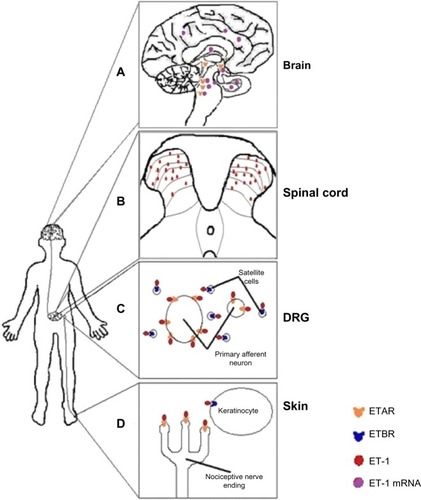Figures & data
Table 1 ET receptor agonists and antagonists commonly used in basic research and clinical studies
Figure 1 A schematic of the location of endothelin-1 (ET-1) and endothelin receptors found throughout the pain pathway.
Abbreviation: ET, endothelin-1.

Table 2 Effect of endothelin-1 administration in humans
Figure 2 Mechanisms of the endothelin system in various parts of the pain pathway at the cellular level in rodents.
Abbreviations: CNS, central nervous system; TRPV1, transient receptor potential vanilloid subfamily; NMDA, N-methyl-D-aspartate; PAG, periaqueductal gray; ET, endothelin-1.

Table 3 Participation of ETA and ETB receptors in different models
